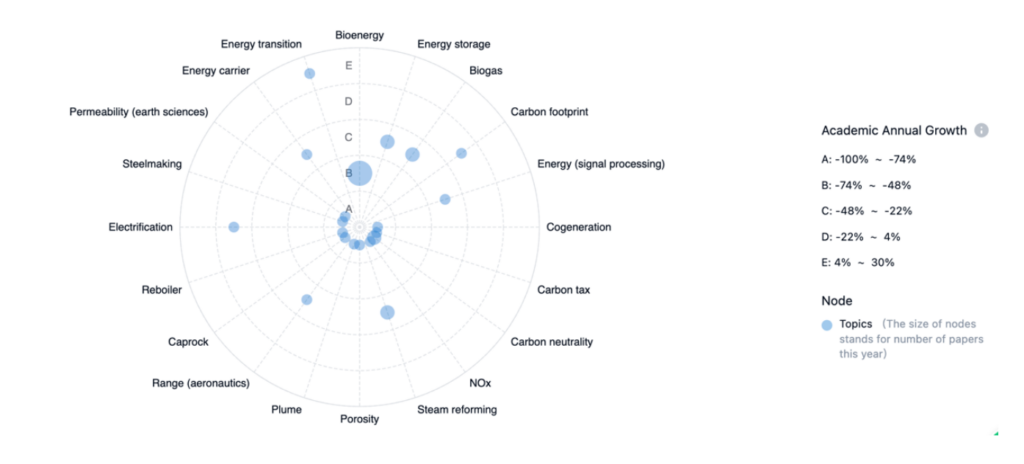Trends and Innovations in CO2 Utilization
Carbon dioxide (CO2) is one of the most significant contributors to global warming, and reducing its concentration in the atmosphere is essential for mitigating climate change.
CO2 utilization is emerging as a critical technology for addressing climate change and promoting sustainability. By converting carbon dioxide into valuable products, CO2 utilization can help reduce greenhouse gas emissions while also creating economic and environmental benefits.
In this article, we’ll explore the latest trends and innovations in CO2 utilization.
What is Carbon Capture?
Carbon capture refers to the process of capturing and storing CO2 emissions from various sources, primarily industrial and energy-related activities, to mitigate their impact on the environment and climate change. It is an innovative technology aimed at reducing greenhouse gas emissions and combating global warming.
The process typically involves three main steps: capture, transportation, and storage. During the capture phase, CO2 is separated from the exhaust gases of power plants, factories, or other emission sources. Various techniques are employed, including pre-combustion capture, post-combustion capture, and oxyfuel combustion, depending on the emission source.
What is Carbon Storage?
Carbon storage, also known as carbon sequestration, refers to the long-term storage of CO2 or other greenhouse gases to prevent their release into the atmosphere. It is an important strategy in mitigating climate change by reducing the concentration of greenhouse gases that contribute to global warming.
Carbon Capture and Storage (CCS)
One of the most promising trends in CO2 utilization is carbon capture and storage (CCS). This process involves capturing CO2 emissions from industrial processes and storing them underground or in other secure locations. CCS has the potential to significantly reduce greenhouse gas emissions while also creating new economic opportunities.
The technology is currently being used in power plants and other large industrial facilities. The captured CO2 is compressed and transported to a storage location where it can be stored safely and securely for many years. The success of CCS technology will depend on the development of efficient and cost-effective capture, transportation, and storage solutions.

The graph above illustrates the current state of research topics in CCS. The size of each node reflects the level of popularity of its corresponding research topic. As shown, bioenergy, energy storage, and steam reforming have emerged as focal points in the CCS research landscape.
CO2 Conversion Technologies
Another emerging trend in CO2 utilization is the development of CO2 conversion technologies. These technologies convert CO2 into valuable products, such as fuels, chemicals, and building materials.
With advancements in materials science, chemistry, and engineering, CO2 conversion technologies are becoming increasingly efficient and cost-effective. Some of the most promising CO2 conversion technologies include:
- Carbon capture and utilization (CCU) – this process involves converting captured CO2 into valuable products such as fuels, chemicals, and building materials. CCU is a promising technology that could help reduce greenhouse gas emissions and create economic benefits.
- Electrochemical reduction – this technology uses electricity to reduce CO2 into chemicals such as ethylene and methanol.

The matrix thermal map above is a useful tool for visualizing the trend of technical effect layout from year to year. The darker the color block, the more significant the layout. As this graph illustrates, patent applications related to “low cost” have been a consistent area of focus from 2018 to 2022. In addition, extending service life and improving stability are also key focal points.
It’s worth noting that the publication of patents can be delayed, which means that the distribution of patent applications from nearly 2-3 years ago may be lower than what is currently being observed. Nonetheless, the thermal map provides valuable insights into the ongoing trends and focus areas within the field of patent applications.
- Biological conversion – this technology involves using microorganisms to convert CO2 into biofuels, bioplastics, and other valuable products.
Biotechnology and CO2 Utilization
Biotechnology is also playing a critical role in CO2 utilization. With the help of microbes, biotechnology can convert CO2 into valuable products, such as biofuels and bioplastics.
Biotechnology is a rapidly advancing field, and new breakthroughs in genetic engineering and synthetic biology are opening up new opportunities for CO2 utilization. Some of the most promising biotechnology-based CO2 utilization technologies include:
- Algae-based biofuels – this technology uses algae to convert CO2 into biofuels such as ethanol and biodiesel.
- Bioplastics – this technology involves using microbes to convert CO2 into biodegradable plastics that can replace traditional petroleum-based plastics.
- Microbial fuel cells – this technology involves using microbes to convert CO2 into electricity.
Policy and Regulatory Frameworks
To fully realize the potential of CO2 utilization, it’s essential to have supportive policy and regulatory frameworks in place. Governments around the world are recognizing the importance of CO2 utilization and are introducing policies and incentives to support its development and deployment.
R&D professionals can play a critical role in shaping these policies and ensuring that they promote sustainability and innovation. The success of CO2 utilization will depend on supportive policy frameworks that encourage innovation and investment in this critical area.
Your recommended content
-

Meet Hiro Life Sciences: Your Trusted AI Assistant for Accelerated Drug Discovery
Category: Article | Category: Drug Discovery | Category: life sciences
Tuesday, November 26, 2024
AI is revolutionizing drug discovery by providing rapid access to vast and complex datasets, enabling researchers to quickly uncover valuable insights and connections that would be otherwise difficult to observe. By automating routine tasks, enabling advanced analytics, and streamlining workflows, AI is poised to make the entire R&D process significantly more efficient.
-

Patsnap Surpasses US$100 Million in Annual Recurring Revenue
Category: Article | Category: News/PR
Wednesday, June 12, 2024
Patsnap has reached a significant milestone of achieving $100M in Annual Recurring Revenue (ARR), marking an impressive 20% year-over-year growth in 2023. This milestone highlights the massive and meaningful value our platform brings to over 12,000 IP and R&D teams across 50 countries, driving efficiency, productivity, and collaboration.
-

Introducing Hiro, an AI assistant built for IP and R&D workflows
Category: AI advancements | Category: AI development | Category: AI-tools | Category: Article | Category: artificial intelligence
Tuesday, May 14, 2024
Powered by Patsnap’s industry-specific LLM, Hiro is designed to streamline IP and R&D workflows from ideation to product launch. With its robust AI capabilities, Hiro brings a new level of efficiency, precision, and security to tasks that were once time-consuming and labor-intensive.What sets Hiro apart is that it draws from our large language model that’s been trained on market-leading patent records, academic papers, and proprietary innovation data. This ensures we deliver more accurate and reliable results for every prompt.
